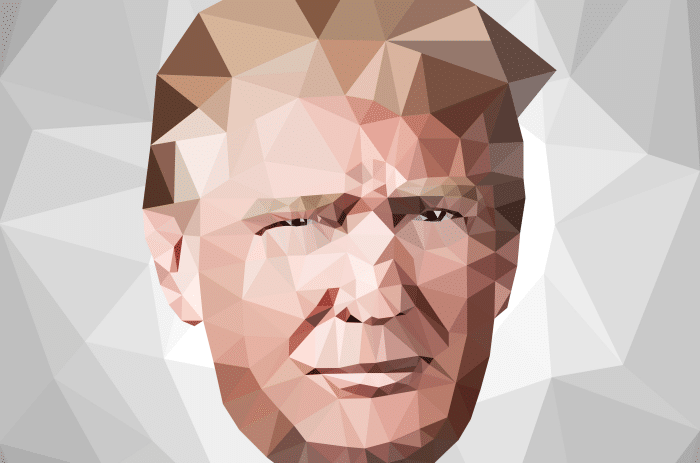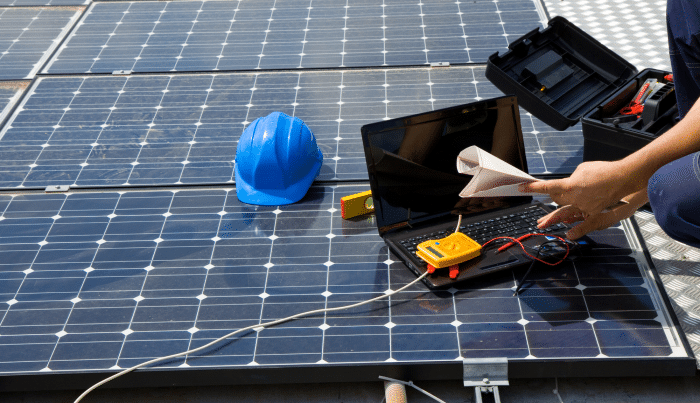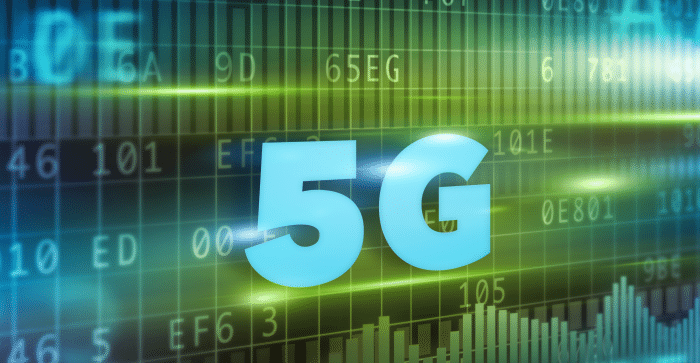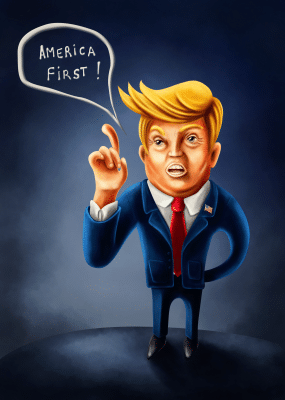On October 8th, in a Weekly Volume titled American Corporations Now Control Your Portfolio, we wrote that,
“Although we believe the U.S. stock market still has room to run (as much as 3,000 – 3500 higher for the Dow), change is coming. Whether it’s a turn in sentiment from euphoric and greedy to pessimistic and fearful; or a new Federal Reserve chairman in the winter, or both, change is coming.”
At the time of our publication, the Dow Jones Industrial Average sat at 22,773.67. The Dow ran just over 3,800 points (since our October report) before getting clobbered this past Tuesday as uncertainty set in, providing a glimpse at how quickly this market can correct and needs to correct. After closing at 26,616.71 on Friday January 26th, the Dow dropped the most since August on Tuesday, losing nearly 350 points that day; and then it lost a whopping 665 points on Friday, marking the worst day for US markets in two years. This correction occurred barely 300 points above our “…3,500 higher for the Dow” prediction made almost four months ago.

At the time of our prediction, we believed that when the Dow reached the 26,000-26,500 level, volatility would enter the mix. The reason: the old staples of the market would be approaching extreme froth levels from a P/E standpoint.
To be clear, we’re not saying the Dow and S&P aren’t primed to move higher. We believe they are. But the market narrative and investment theses will change.
So what will take the markets higher? Selling the future… more specifically, innovations and spending on ‘the new economy.’
Trump | The Big Spender and Talker
Say what you want about President Trump, but he believes in doing things big. From his failures to triumphs, the man has no time for infinitesimal endeavours or economic ‘tweaks.’ From big tax cuts to ripping up trade deals, his brand is all about America’s new economy, as he sees it. And his tax cuts have led to millions of regular Americans receiving bonuses; and in many cases, businesses large and small, are hiring and providing significant hourly raises.

All of this is changing the psyche of millions of Americans who are buying into Trump’s tax cuts and his agenda. If the election were held today, there’s no doubt in our mind Trump would be in for a second term. And no matter your political stripes, you have to base at least part of your investment philosophy on who sits in the Oval Office…
Trump Loves to Pick Fights
How did pundits respond when Trump announced a 30% tariff on Chinese solar panels entering the U.S.? The media decried it was the first shot in a trade war that would surely send the global economy into a tailspin…
What happened in reality was very different, similar to what’s been happening under Trump for a year now. A week later, JinkoSolar, one of China’s biggest manufacturers, announced plans to open a new plant in the U.S. The company released a statement that its board of directors had given the go-ahead to “finalize planning for the construction of an advanced solar manufacturing facility in the U.S.”

Trump’s tariff on Chinese solar panels could crush the industry
Solar panels are going to be more expensive, therefor solar energy won’t be able to compete with conventional sources of energy (remember, Trump is a believer in ‘clean coal’ and fossil fuel extraction and exportation. He boasted about both in his State of the Union address this past week); however, more conventional energy and solar will be produced in America. Trump is building momentum, which he always talks about, and is setting the stage for what might be his biggest move yet…
Tax cuts, bonuses, new factories, the repatriation of hundreds of billions of corporate profits, and a surging stock market aside, the biggest potential ‘Trump impact’ of all is something many are unfamiliar with: 5G.
5G to Lead the New Economy
What is 5G?
5G is the next generation of the communication network, which takes speed and bandwidth capabilities to new levels. Imagine a smartphone that can download a 3D video in seconds. Imagine the bandwidth required to power millions of robots or self-driving cars. With $6 trillion to be spent on the Internet of Things over the next five years, according to BI Intelligence, the necessary bandwidth to connect everything to the internet will be tremendous.

Because of this, 5G will be the lifeblood of the new economy and in many ways redefine the experience of the internet and all it allows us to do. 5G will be the engine of economic innovation moving forward and drive things like artificial intelligence and machine learning into smartphones for everyone. 5G, in some environments, is estimated to provide 100 times faster downloads than the network capabilities we have today. Ponder that…
After attending the Consumer Electronic Show in Las Vegas last month, Aaron Hoddinott, Managing Director of Pinnacle Digest, wrote:
“Think about the exponential increase in data transfer capabilities that are coming to everyday Joes. You think social, sharing and online activities are massive right now? They will increase by an order of magnitude when 5G goes mainstream, opening the door for many new online platforms and opportunities once unimaginable. Read up on 5G here. AT&T, for example, plans to launch its 5G network later this year. Smartphone companies have already built phones for this game-changing advancement. AI is going to explode when 5G goes mainstream. And new sectors will spawn from it.”
How 5G Will Create the New Economy
The below video explains in a concise, easy to understand format how 5G works:
The internet was dubbed the ‘Great Equalizer.’ Look at the millions of entrepreneurs who built businesses and wield tremendous influence today through this medium. No one can argue that the economy we live into today revolves around the internet. Few of us go less than an hour without depending on the internet or a wireless connection. The internet has allowed Amazon to become one of the biggest companies ever, and its founder the richest man in the world.
So, 5G will offer download speeds up to 10 gigabits per second, and is expected to be between ten and one hundred times faster than 4G. Think about that for a second… something as trivial as downloading a movie could be done in 1-2 seconds, on a smartphone! Consumers, and businesses will either be on 5G or miss out on the new economy. It’s going to change the world and the power players in it.
5G is Happening Now
“Each of the four nationwide cell phone carriers — Verizon (VZ), AT&T (T), T-Mobile (TMUS) and Sprint (S) — are developing and testing 5G network technology. Chipmakers, including Qualcomm and Intel, are building processors and radios that enable 5G communications. And the major network equipment companies, including Nokia (NOK), Ericsson and Huawei, are building the backbone and equipment to support 5G.”
The consensus in the wireless industry is that 5G will be ready to launch by 2020, but trial rollouts will begin this year. What else is planned for 2020? Trump’s re-election of course. However, before he wins his second term, he wants to beat the private sector to the 5G end zone. Trump is not just embracing change, he wants to lead it and help create (and control) the new economy.
Axios Spills Beans on Plan to Nationalize 5G Wireless Network
While we are free market thinkers and don’t necessarily agree with this approach, the Trump administration is considering a plan to nationalize the next-generation 5G wireless network to protect against cyber-attacks from China or anyone else. According to sensitive documents obtained by Axios:
“…a PowerPoint deck and a memo – both produced by a senior National Security Council official – which were presented recently to senior officials at other agencies in the Trump administration.”
Furthermore, according to Axios,
“Trump national security officials are considering an unprecedented federal takeover of a portion of the nation’s mobile network to guard against China…”
The memo goes on to explain why America needs a centralized, nationwide 5G network within three years. Moreover, instead of compete against the major carriers, it suggests “the best option would be for the US government pay for and build the network and then rent it to carriers like AT&T, Verizon, and T-Mobile.”
The memo continued,
“It is necessary and possible to build a secure, high-performance, world-leading 5G network platform by the end of the first term.”
And,
“It refers to the nationalization of 5G as the “21st century equivalent of the Eisenhower National Highway System” a reference the 1950s-era federal project to build out the US interstate highway system…”
Note: It is still necessary for engineers to work out ‘kinks’ to support different case-loads of usage.
Trump is Motivated to Nationalize 5G
As the magnitude of this project sets in, one can see Trump’s inherent motivation. There are just a few problems. First of all, it would cost hundreds of billions in taxpayer money to fund.
Secondly, it is very un-Republican to step on the toes of the private sector, which already has rollout plans of its own.
Third, Trump won’t be President forever, although he may like to be. This type of control over a major utility (which is exactly what 5G will be), as we’ve seen in the past with various industries the government controls, can lead to corporate favouritism and the wasting of taxpayer funds.
And lastly, 5G will require constant innovation and iterations as the network evolves… government isn’t known for its willingness to quickly adapt and innovate.
Like almost all of Trump’s plans, the naysayers came out in full-force against this speculation of nationalizing 5G. Titles of a few recent articles include Trump’s 5G proposal is destructive nonsense, Trump’s crazy 5G plan actually ‘diagnoses a real problem’ and Trump’s rush to build a national 5G network may backfire, give China the technological edge.
FCC Chair Opposes Nationalized Program
Even the chairman of the Federal Communications Commission (whom we are a fan of) stands in firm opposition of the early-stage proposal by the Trump administration.
FCC Chair, Ajit Pai, put out a statement on January 29th in response to the released memo, stating,
“I oppose any proposal for the federal government to build and operate a nationwide 5G network.”
Furthermore,
“The main lesson to draw from the wireless sector’s development over the past three decades-including American leadership in 4G-is that the market, not government, is best positioned to drive innovation and investment…”
Note: Pai is a former attorney for Verizon, one of the four leading carriers racing to roll out its 5G network.
While enhanced cyber-security will be a benefit of rolling out 5G, the consumer electronics industry, from AI to the IoT and everything in between, will explode in this new economy built on 5G. We don’t like the Trump administration’s concept of nationalizing 5G; however, much of the world’s new innovations over the coming 5 to 10 years will rely on it – nationalized or not. And if the Trump administration goes the way of nationalizing 5G (which ironically will have a tougher time getting approval from Republicans than Democrats), expect the cost of such a system to be in the hundreds of billions of dollars.
Trump | Going Big on Infrastructure
President Trump gave his first State of the Union address on Tuesday night, in which he laid out plans to inject $1.5 trillion into the US economy by way of infrastructure spending. The video below highlights four minutes from Trump’s speech.
Most significant to investors was Trump’s statement:
“I am calling on the Congress to produce a bill that generates at least $1.5 trillion for the new infrastructure investment we need.”
Moreover,
“Every Federal dollar should be leveraged by partnering with State and local governments and, where appropriate, tapping into private sector investment — to permanently fix the infrastructure deficit.”
Trump Wants to Build The New Economy, Literally
No surprise, Trump wants a legacy. And he wants his impact on America to be felt, and seen, for decades to come. While no mention of a nationalized 5G rollout plan has been disclosed in any of the infrastructure spending plans, Trump is looking to local and state governments to carry the load. Despite the headline-grabbing $1 trillion-plus number, Trump’s infrastructure package will include only $200 billion in direct federal investment. According to Business Insider,
“Trump expects the other $1.3 trillion to come from a combination of local, state, and private investment, incentivized by the federal seed money.”
The day before Trump’s State of the Union address, Gary Cohn, the former chief operating officer of Goldman Sachs, and current director of the National Economic Council, stated,
“When you look at some of the economic data, the one number that people pick on is productivity. We need more productivity growth. Our infrastructure and building our infrastructure and rebuilding our infrastructure can clearly lead to productivity growth in this country.”
The Future Relies on 5G
When you rip up roads, build new bridges and embark on a national infrastructure program, it provides an ideal opportunity to expand fiber optic pipes nationwide; this prepares a nation, and its new economy, for a future reliant on 5G… America needs this badly, perhaps that’s why the Trump administration is pondering nationalizing 5G.
Deloitte reported last summer:
“Unlocking the full potential of 5G in the United States rests on a key assumption: the extension of fiber deep into the network. Despite the demand and potential economic benefits of fiber deployment, the United States lacks the fiber density in access networks to make the bandwidth advancements necessary to improve the pace of innovation and economic growth. Increased speed and capacity from 5G will rely on higher frequencies and network densification. Carriers will deploy many more small cells, homespots, and hotspots in higher bands, with a coverage radius measured in meters versus kilometers. Without more deep fiber, carriers will be unable to support the projected four-fold increase in mobile data traffic between 2016 and 2021.”
We can see how infrastructure and 5G are reliant on one another. So, if Trump can not get his infrastructure plan passed, fully maximizing the benefits of 5G may be jeopardized as well. It all ties in.
New Economy Coming with 5G Nationalized or Not
Certainly, whether 5G happens via a nationalized program or not, this is a President unafraid to spend. It’s why we dubbed him the ‘Inflation President’ one week after his upset win in November of 2016. He has proved us right so far, as the U.S. dollar continues to show weakness (had its worst year in over a decade during Trump’s first year in office), boosting commodities and precious metals.
Finally, President Trump is working for his legacy by lifting up the U.S. economy, the ultimate sign of success and power in his eyes. A new economy fueled by 5G is coming. The 5G network will reshape how we live and utilize the internet; and it will transform how commerce is conducted. Most importantly, it will provide years of investment opportunities across various sectors. 5G holds the economic upside the frothy stock market so desperately needs.
All the best with your investments,
PINNACLEDIGEST.COM
P.S. If you’re not already a member of our newsletter and you invest in TSX Venture stocks, what are you waiting for? Subscribe today. Only our best content will land in your inbox.


